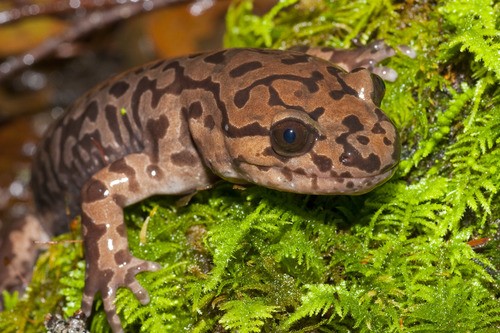Coastal giant salamander
A species of Pacific giant salamanders Scientific name : Dicamptodon tenebrosus Genus : Pacific giant salamanders
Coastal giant salamander, A species of Pacific giant salamanders
Scientific name: Dicamptodon tenebrosus
Genus: Pacific giant salamanders
Content
Description People often ask General Info
Description
The coastal giant salamander is the biggest salamander in North America that lives on land. It is born in water and later develops legs and lungs to allow it to live on land and breathe air. Never far from a water source, the coastal giant salamander is usually seen close to ponds and streams or moist woodland areas, hiding under wet leaves and rocks.
People often ask
General Info
Lifespan
12-15 years
Diet
Coastal giant salamander primarily subsists on small invertebrates, including various aquatic and terrestrial insects. Its eating habits extend to smaller amphibians, making it a carnivorous predator in its habitat.
Appearance
Coastal giant salamander is a large salamander, stretching up to 33 cm in length, with a sturdy body and stubby limbs. Its skin is a shiny, dark brown or black, often speckled with gold or grey. Its head is broad, with a wide mouth and conspicuous, lidless eyes. The tail is flattened, aiding in swimming. There are no notable differences in appearance due to age, gender, or subspecies.
Behavior
Coastal giant salamander displays nocturnal tendencies by hunting and feeding at night. It's an expert ambush predator, lurking in shallow water before lunging at prey. Socially, it leans towards isolation outside mating season. It can be territorial and aggressive towards perceived threats. Adapted to Pacific Northwest forests, it swells size seasonally for survival.
Population
Stable
Scientific Classification
Phylum
Chordates Class
Amphibians Order
Salamanders Family
Mole salamanders Species
Coastal giant salamander 